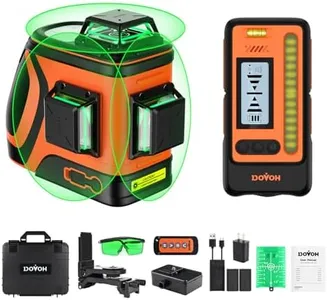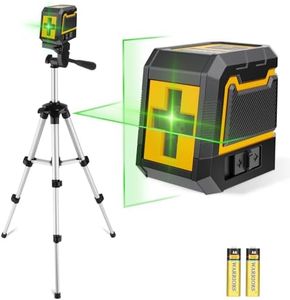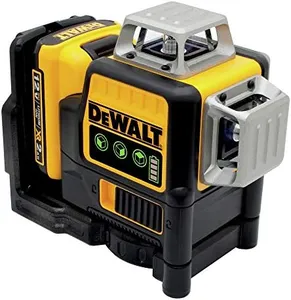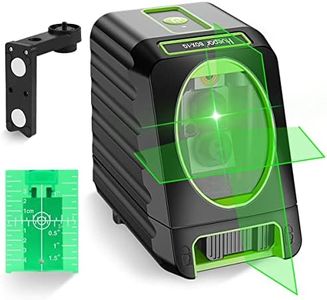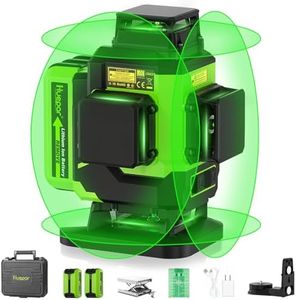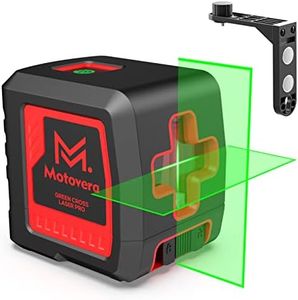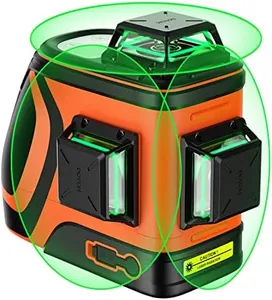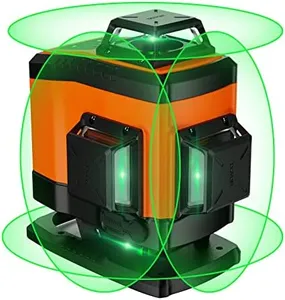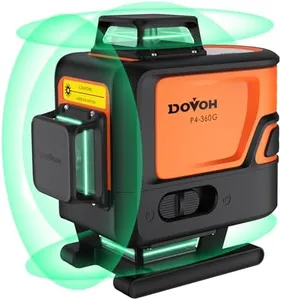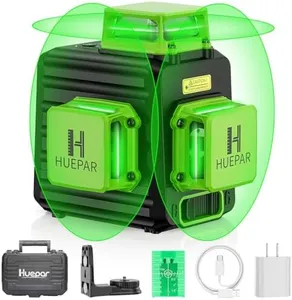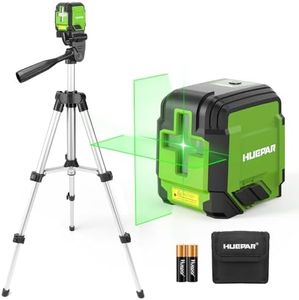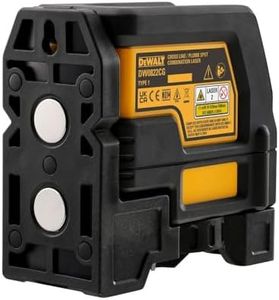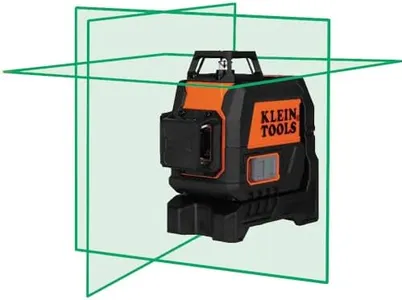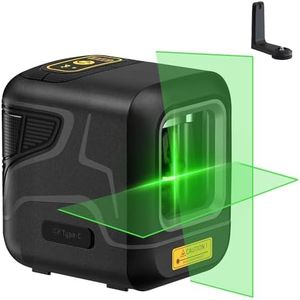10 Best Green Laser Levels 2025 in the United States
Our technology thoroughly searches through the online shopping world, reviewing hundreds of sites. We then process and analyze this information, updating in real-time to bring you the latest top-rated products. This way, you always get the best and most current options available.

Our Top Picks
DEWALT 12V MAX Laser Level, Green Line Laser, 3-Way, 360 Degree Professional Laser, Cordless/Rechargeable (DW089LG)
Most important from
3792 reviews
The DEWALT 12V MAX Green Line Laser Level (DW089LG) is designed for professionals and DIY enthusiasts who need a reliable and precise leveling tool. One of its standout features is the green beam technology, which offers better visibility than traditional red lasers, especially in bright conditions. This can significantly enhance user efficiency during tasks requiring accurate alignment or leveling. The self-leveling capability, which keeps the laser accurate within ±3mm at 10m, ensures that you can trust the readings for your projects without constant adjustments.
In terms of durability, the overmolded housing and IP65 rating mean this tool is built to withstand tough job site conditions, protecting it from dust and water. The locking pendulum is another thoughtful feature that helps prevent internal damage during transport, making it a great choice for on-the-go professionals.
Battery life is commendable, thanks to the 12V MAX lithium-ion rechargeable battery, which means you won’t have to worry about frequent battery changes mid-project. Plus, the included robust carrying case and various mounting options make it easy to transport and set up. This laser level is ideal for contractors, framers, and anyone needing a dependable tool for indoor or outdoor leveling tasks. With strong performance features and a solid build, the DEWALT DW089LG is a great option for those who prioritize accuracy and durability in their laser leveling tools.
Most important from
3792 reviews
Huepar Box-1G Laser Level Self-Leveling, 150ft Outdoor Green Cross Line with Pulse Mode, 150° Vertical Lines, Magnetic Base & Battery Included – High Precision for DIY and Professional Use
Most important from
12405 reviews
The Huepar Box-1G Laser Level is a versatile and high-precision tool suitable for both DIY enthusiasts and professionals. One of its main strengths is its impressive laser range of up to 150ft, which can be extended to 197ft using the pulse mode and a laser receiver. This makes it suitable for a variety of indoor and outdoor applications. The green laser beam is notably bright, ensuring good visibility even in strong light conditions.
In terms of accuracy, it delivers a remarkable precision of ±1/13 inch at 33ft, which is ideal for detailed tasks requiring exact measurements. The self-leveling feature is highly convenient, automatically adjusting within 4°, and it includes a manual mode for user-defined angles, adding to its versatility. The 150° vertical line and 130° horizontal line provide ample coverage for most tasks, and users can choose between a single line and cross line mode based on their specific needs, helping to save battery life when full coverage is not required.
Durability is another strong point; with an IP54 rating, it is resistant to dust and water, and its TPR soft rubber housing offers additional protection against drops and impacts. The magnetic base allows for easy attachment to metal surfaces and offers 360° rotation, enhancing positioning flexibility. Battery life, offering up to 9 hours of continuous use, is quite reasonable, though the reliance on AA batteries may require frequent replacements during extended use. The included magnetic bracket, laser target plate, and carry bag add further value, as does the 24-month after-sales service with 24/7 customer support. This laser level is a solid choice for those needing a reliable, high-precision tool with flexible functionality and robust build quality.
Most important from
12405 reviews
Buying Guide for the Best Green Laser Levels
Choosing the right green laser level can make a significant difference in the accuracy and efficiency of your projects. Green laser levels are preferred over red ones because they are more visible to the human eye, especially in bright conditions. When selecting a green laser level, it's important to consider several key specifications to ensure you get the best fit for your needs. Here are the main specs to look at and how to navigate them.FAQ
Most Popular Categories Right Now
